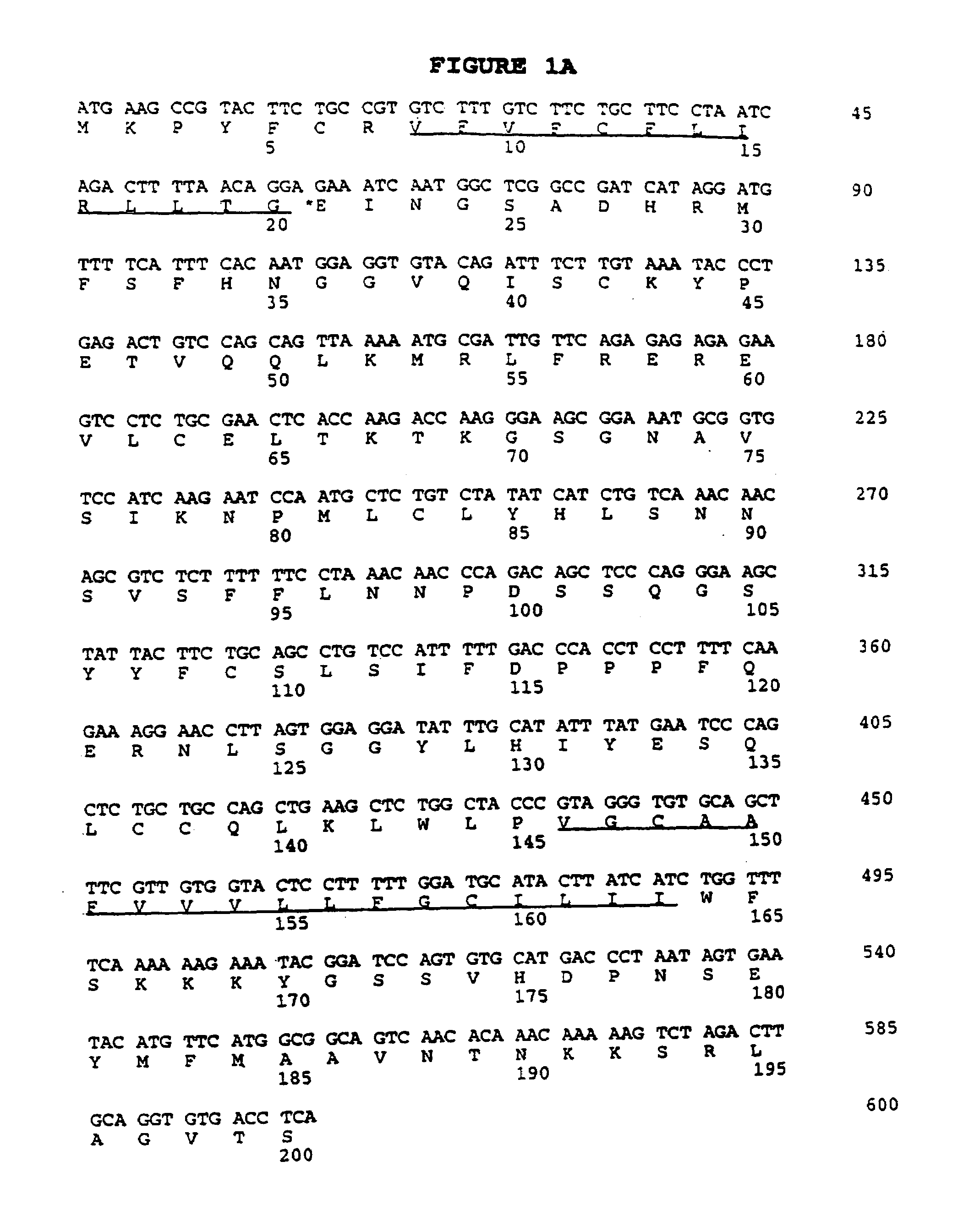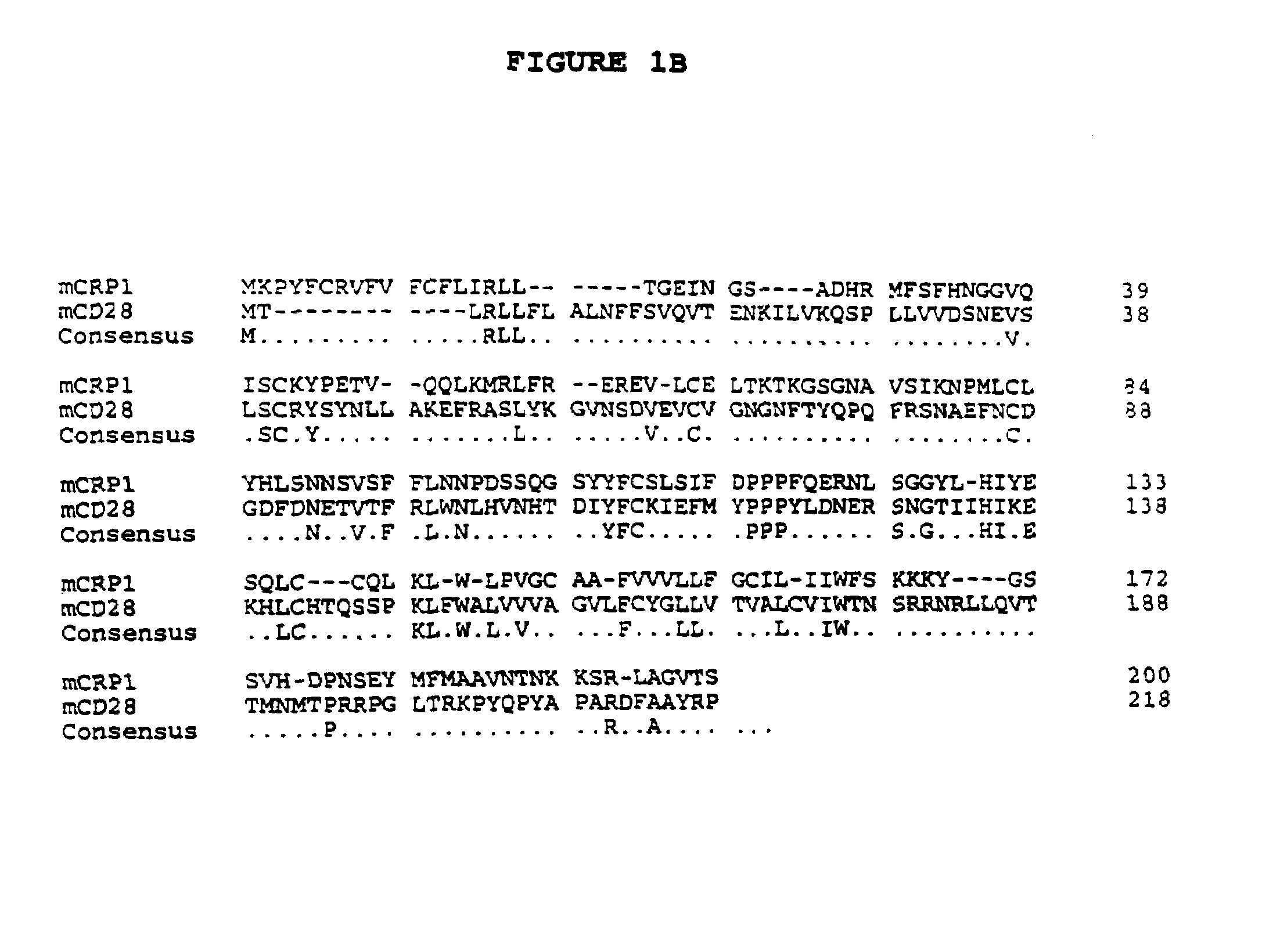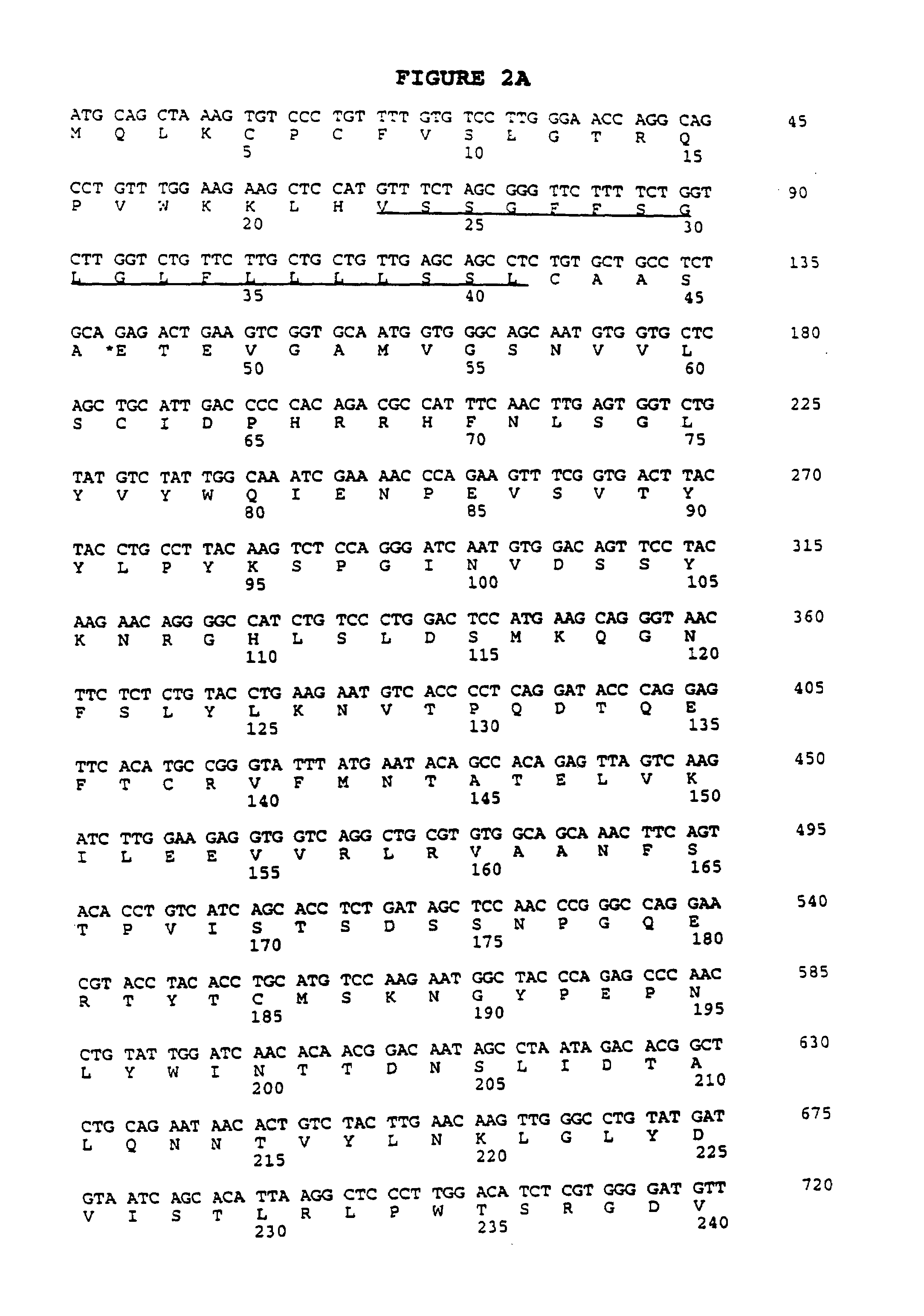Antibodies which bind B7RP1
a technology of b7rp1 and antibodies, applied in the field of polypeptides, can solve the problems of dramatically high t-cell levels in the ctla-4 gene of the mime, and achieve the effect of inhibiting t-cell proliferation
- Summary
- Abstract
- Description
- Claims
- Application Information
AI Technical Summary
Benefits of technology
Problems solved by technology
Method used
Image
Examples
example 1
CRP1 cDNA and Amino Acid Sequence
[0204]Female C57 / Black 6 mice were sacrificed, and the small intestines were excised, and the Peyer's patches were removed. The small intestine tissue was sliced open and washed to remove mucus and other debris. The epithelial layer, which contains the intestinal intraepithelial cells (iIELs), was released by gentle agitation in RPMI-1640 supplemented with 1 mM dithiothreitol (DTT), for 20 minutes at 37° C. Disassociated cells were passed through a 100μ filter, washed in 50 ml of RPMI-1640, mixed to further break up clumps of cells, and then passed through a 40μ strainer to obtain single cell populations. These cells were then washed again in a 50 ml volume of RPMI-1640 to ensure the removal of the residual DTT. The tissue was then agitated and washed as before to gather the remaining iIELs. The iIELs were separated from the adipose cells and most epithelial cells on a 3-step Percol gradient, with the iIELs banding at the 40% to 80% interface. These ...
example 2
Cloning of Human CRP1 cDNA
[0206]The nucleic acid sequence encoding human CRP1 protein is identified by the following procedures. A human cDNA library was prepared from enriched lymphocytes from peripheral human blood from normal human volunteers. The lymphocytes were purified and red blood cells were removed by Lymphocyte Separation Media (ICN Pharmaceuticals, Inc., Costa Mesa, Calif.). The cells were then activated overnight in media containing 10 ng / ml PMA, 500 ng / ml ionomycin, and plate-bound activating antibodies to CD3. Total RNA was prepared from the activated cells by the Trizol method (Gibco / BRL) and poly A RNA was isolated by Dynal bead purification. cDNA was made from the isolated poly A RNA and size selected for largest cDNA fragments. The size selected cDNA was then ligated into the plasmid pSPORT (Gibco / BRL). DNA encoding human CRP1 protein is obtained by screening the activated lymphocyte cDNA library by either recombinant bacteriophage plaque, or transformed bacteria ...
example 3
B7RP1 DNA and Amino Acid Sequence
[0207]A cDNA clone, designated smil1-00003-g5, contained nucleotide sequence homology to B7.1 (CD80) and B7.2 (CD86). Translation of the sequence (FIG. 2A) and subsequent comparison to known proteins in a public database revealed 20% amino acid identity with murine B7.1 (FIG. 2B). This low homology was significant because murine B7.1 shares only 24% amino acid identity with murine B7.2. Despite this low homology, critical cysteine residues are conserved between the open reading frame of this clone and murine B7.1 and B7.2 at residues 62, 138, 185, and 242 (relative to the initiating methionine, FIG. 2B). The approximate mature protein length and the location of the transmembrane region relative to the carboxy terminus are also similar in the putative ORF of this clone, as compared to B7.1 and B7.2. We named the gene B7RP1, for B7-Related Protein-1.
PUM
| Property | Measurement | Unit |
|---|---|---|
| Current | aaaaa | aaaaa |
| Current | aaaaa | aaaaa |
| Current | aaaaa | aaaaa |
Abstract
Description
Claims
Application Information
 Login to View More
Login to View More - R&D
- Intellectual Property
- Life Sciences
- Materials
- Tech Scout
- Unparalleled Data Quality
- Higher Quality Content
- 60% Fewer Hallucinations
Browse by: Latest US Patents, China's latest patents, Technical Efficacy Thesaurus, Application Domain, Technology Topic, Popular Technical Reports.
© 2025 PatSnap. All rights reserved.Legal|Privacy policy|Modern Slavery Act Transparency Statement|Sitemap|About US| Contact US: help@patsnap.com



